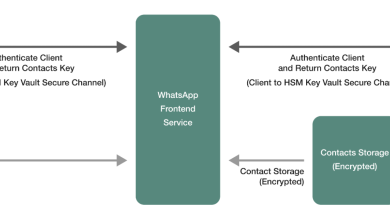13 Email Marketing Trends to Jump on in 2024

Staying up to date with the latest email marketing trends and best practices is crucial if you want to thrive in today’s online world. While email marketing might not be as new or exciting as other promotional strategies like social media advertising, it’s still one of the most valuable tools you have if you want to grow, nurture audiences, and scale revenue.
In fact, according to HubSpot’s Sales Trends Report in 2024, email marketing is the third-best way to attract and convert high-quality leads. It’s a direct line to your target audience, and a way to cut through the noise of social feeds, and bypass the issues of third-party cookies being phased out.
However, success with email marketing requires an ever-evolving strategy. Consumer preferences and habits change, technology evolves, and even compliance guidelines change over time. So, what do you need to do in 2024 to boost the ROI of your email campaigns?
Here’s your guide to the top email marketing trends from Toptal’s freelance email marketers worth watching.
Email Marketing Trends and Best Practices for 2024
The digital landscape has been changing at a break-neck speed in the last few years, thanks to the rise of artificial intelligence, and the evolution of consumers. Email is still one of the best ways to engage and convert your customers, but standing out in inboxes, and preserving lucrative relationships is becoming increasingly difficult.
Here are the trends you’ll need to know to succeed in 2024.
1. Increased Focus on Data Protection and Privacy
Phishing, scams, and other forms of cybercrime have skyrocketed as the world becomes increasingly digital. As a result, consumers are becoming more wary of sharing too much information with companies. In fact, 86% of customers think companies collect more data than they need.
I know I’ve personally ignored dozens of emails just because they don’t seem trustworthy. Plus, Google and Yahoo (two of the top email providers) are implementing new guidelines that companies need to be aware of in order to maintain email visibility. In 2024, you’ll need to implement:
- SPF and DKIM authentication: These protocols have been crucial for a while now, but email providers are increasingly pushing companies to set up Sender Policy Frameworks (SPF) and DomainKeys Identified Mail (DKIM) to show customers that their emails come from a legitimate source.
- DMARC policies: Alongside DKIM and SPF, Domain-based message authentication, reporting, and conformance policies are now mandatory. This should help to protect your domain against spoofing and abuse.
- Valid DNS records: Maintaining valid reverse and forward DNS records will be crucial. These records contribute to the traceability and legitimacy of sending domains.
- One-click unsubscribe: Ensuring customers can easily unsubscribe from your messages is still crucial. Gmail in particular is enforcing this strategy on a massive scale, so make sure you’re giving your customers the freedom to opt-out.
- Maintaining low spam rates: Monitoring your spam rates and keeping them below 0.3% will be crucial in 2024. Ensure you’re not ending up in spam inboxes by creating valuable and authentic content for customers.
Another concept worth exploring is “BIMI,” or Brand Indicators for Message Identification. This allows users to showcase a logo next to emails sent from their domain.
Adopting BIMI helps to convince your customers that the emails they receive are from authentic parties, rather than phishing or scam groups. One study from Red Sift even found that using BIMI increases open rates, and brand recall.
2. Increased Use of Generative AI
AI has played a part in various email marketing trends and best practices for some time now. However, the rise of new algorithms is leading to new opportunities.
Generative AI has launched a significant leap forward in email marketing technology. It empowers marketers to create more personalized and effective email campaigns while saving time and resources. The right generative AI tools can assist companies with:
- Audience segmentation: Creating customer profiles and advanced segments for more personalized and relevant marketing campaigns. Generative AI can suggest segments for you based on the information you provide about your target audience.
- Personalized content creation: AI can use the data you provide to create compelling email content tailored to individual preferences at scale. It can ensure that every message you send seems uniquely crafted to the recipient.
- Email strategy: Generative AI can save you time and effort on your email strategy. Suggesting email workflows, the best time to send messages based on your data, and delivering other insights that guide your strategy.
Generative AI’s ability to scale personalized content creation is valuable since 76% of customers say they’re more likely to buy from brands that personalize their campaigns. However, it’s important not to rely on the bots too much. AI can still make mistakes, so you’ll need to edit and assess every email, subject line, and marketing campaign before you implement them.
3. More Interactive Email Experiences
Studies show that interactive content achieves 52.6% higher engagement than static content. I know I spend more time on emails when they include fun or engaging elements. This means email marketing trends are increasingly revolving around interactivity.
Fortunately, many email marketing automation tools now allow you to infuse your content with more dynamic components, such as:
- Embedded widgets: Interactive elements like polls, surveys, quizzes, and even color palettes customers can experiment with within an email.
- Gamification elements: Game-like elements, such as scratch cards, spin-to-win emails, and even point systems that make customers feel like they’re “winning” just by opening your messages.
- Dynamic content: Content that can update in real-time based on user actions or external factors, such as weather conditions or stock levels.
- Interactive buttons: Interactive call-to-action buttons that animate, change color, or expand when customers hover over them or click.
- Competitions and challenges: Content specifically designed to drive customers to take action, such as “challenging them” to do something. For instance, Canva sends out interactive content that encourages customers to participate in design challenges:
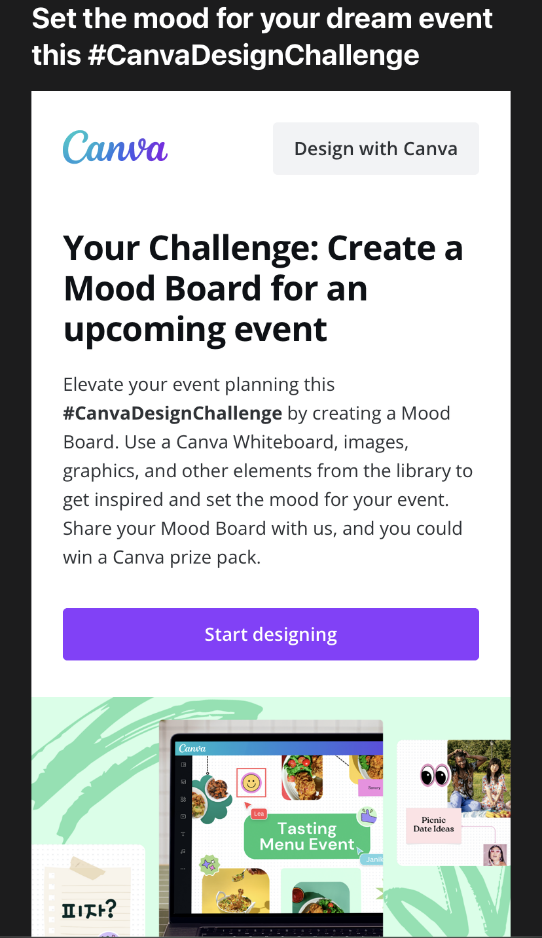
Interactive content takes your email messages to the next level by actually giving customers a way to get involved with your content. The more fun and engaging your emails are, the more likely customers are to click on future messages and connect with your brand.
4. Minimalistic, Mobile-Friendly, and Accessible Designs
Less is more when it comes to email marketing trends in 2024. You’ve probably noticed that countless emails from major brands now involve more clarity and simplicity rather than being packed with large amounts of content.
While this might seem like a contradictory trend to the demand for interactive experiences, the key to making “minimalistic” experiences is about cleaning your message to ensure you focus on what’s most important. This could mean using clean layouts with plenty of whitespace, simplified color schemes, and typography that enhances readability.
Minimalistic designs serve a number of purposes for today’s email marketers. They can:
- Improve accessibility: With 2.2 billion people having some form of visual impairment worldwide, accessibility is crucial in email marketing. Creating a clear hierarchy for your emails, using legible fonts and high contrast, and ensuring you include alt-text for images that don’t load properly will help you reach a wider audience.
- Enhance mobile friendliness: The majority of emails are now opened on mobile devices, which means designing emails for mobile is essential. Simpler designs load faster and more effectively on mobile phones. You can even consider optimizing your emails to support both light and dark mode themes on devices or use touch-friendly elements.
- Increase clarity: Simpler emails mean you’re less likely to overwhelm your customers with too much content. Consumers browsing through emails don’t want to be bombarded with too many product choices or different links. Being more focused on your content can help to increase your click-through and conversion rates.
Here’s a great example of a minimalistic, mobile-friendly, and accessible email from Canva that still delivers value with multi-media elements and insights.
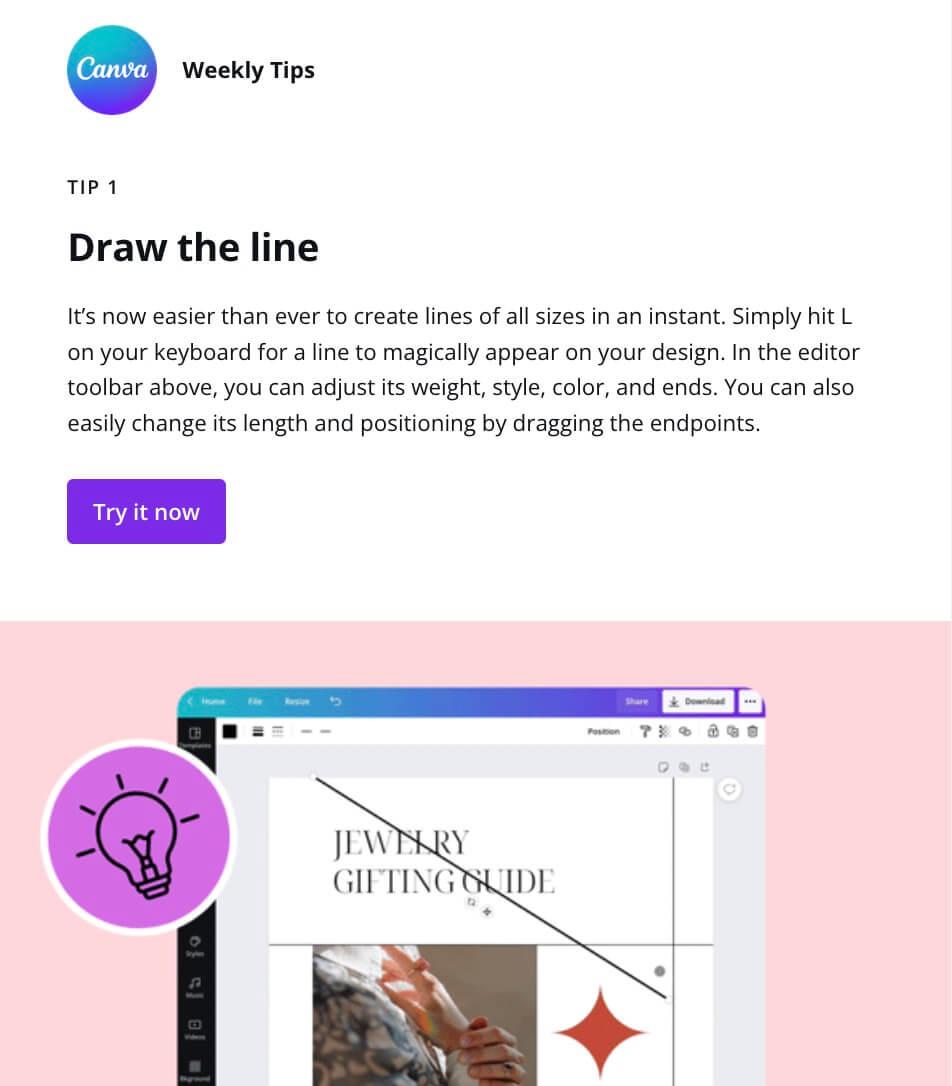
5. Changes to Metric Tracking Strategies
One of the most significant email marketing trends worth paying attention to in 2024, is the changing focus on which email metrics business leaders should be monitoring. For instance, when looking for ways to scale and optimize their email marketing strategies, many businesses focus on open rates.
It’s easy to assume that the emails with the highest open rates generate the most success. After all, if customers don’t open your emails, they can’t convert.
However, new concepts, like Apple’s Mail Privacy Protection guidelines, stop senders from using invisible pixels to collect information about a user. This means you can’t accurately identify if customers are opening your emails on an Apple device.
Now that open rates aren’t as reliable as they once were, companies will need to focus on other insights, such as:
- Engagement over time: Knowing how long customers continue to engage with your emails offers insights into content relevance and effectiveness.
- Conversion rates: Measuring the percentage of emails that complete a desired action will ensure you’re earning money from your campaigns.
- List growth: Tracking how quickly your email list grows or declines will help you determine if you’re creating the right campaigns.
- Click rate: Watching the percentage of customers who click links in your email will help you see if customers are engaging with your content.
Of course, the metrics you need to track will vary depending on the goals of your email marketing campaign. However, it’s worth looking beyond just “open rates” in 2024.
6. More Customer-Centric Email Communications
With more emails arriving in customer inboxes every day, companies need to find a way to really engage their target audience. Generic, cold-email practices are rapidly being replaced with campaigns that focus on addressing the specific needs and interests of their audience.
In the past, countless companies focused on what “they” wanted to share with their customers – their latest deals, offers, and blog posts, for instance. However, in 2024, the key to success will be to think about what customers want and need.
For instance, in a world where cookies are rapidly being phased out by browser leaders like Google, companies need a way to collect feedback and insights from their audience. But simply asking for messages and begging for reviews isn’t enough in today’s world.
Instead, you need to think about why customers would want to share their insights with you.
For instance, in this email from New York Comic Con, the company doesn’t just tell customers it needs their feedback – it asks them to help shape the future of the convention.
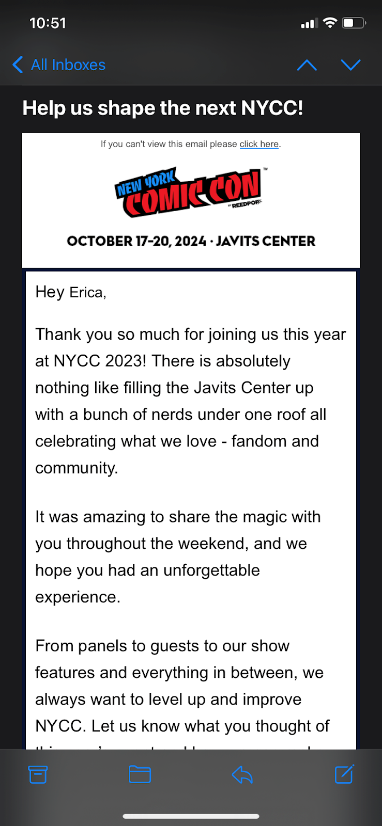
This shows customers that the group is actually invested in making experiences better for them, and leveraging their responses to design future events. In 2024, focusing on the benefits, goals, and requirements of your customers will help you to boost engagement.
7. Stronger Relationships Between Email and SMS
You might have noticed in recent years that top email marketing automation platforms, such as MailChimp and Klaviyo, have started offering companies the opportunity to combine their email marketing strategies with SMS campaigns.

There’s a good reason for this. While email is a powerful channel for nurturing relationships and converting customers, companies need an omnichannel strategy to excel in today’s world. The more avenues you have to reach your audience, the better your engagement will be.
Combining your email marketing strategy with SMS gives you two direct lines to your customers. Even if your message in their inbox goes unread, you have a second chance to connect with them through text. In fact, SMS can be even more valuable at earning engagement than email, with a 98% average open rate and 10.66% click-through rate.
The key to success when combining email and SMS strategies is making sure you don’t overwhelm your audience. Avoid sending numerous texts and emails at once, or you could risk prompting your customers to unsubscribe from all of your communications.
8. More Impactful Subject Lines
Subject lines have always been a major factor in determining the success of email marketing campaigns. If you’re like me, you’ve probably found yourself scrolling past dozens of boring subject lines in the past, barely paying attention to what they say.
That’s why companies are investing in new ways to shake up the experience for customers, and grab their attention in a cluttered inbox. The two biggest email marketing trends I’ve noticed here include using emojis, and numbers in subject lines.

Emojis immediately grab the attention of your customers by giving them something colorful and engaging to look at in a sea of text. Studies even show that emails with emojis in the subject line have an open rate that’s 56% higher than their competitors.
Emojis are also an excellent way to introduce your customers to your brand’s personality. Numbers, on the other hand, share similar benefits.
They stand out more than words, because they’re less common, and they provide your customers with a clear insight into the benefits they’ll get from opening your email. Think of it this way, would you be more likely to click on an email that says, “New deal”, or one that says, “Get 50% off”.
9. Increased Focus on Niche Content and Tailored Newsletters
Virtually every company has its own email newsletter these days. But increasingly, we’re seeing companies that focus on different customer segments and groups, producing a range of different newsletters that are tuned to different interests.
For instance, HubSpot has newsletters you can subscribe to if you’re interested in sales, customer service, or marketing. They also have a dedicated newsletter called “The Lead,” which covers the latest news and trends that might be relevant to marketing teams.
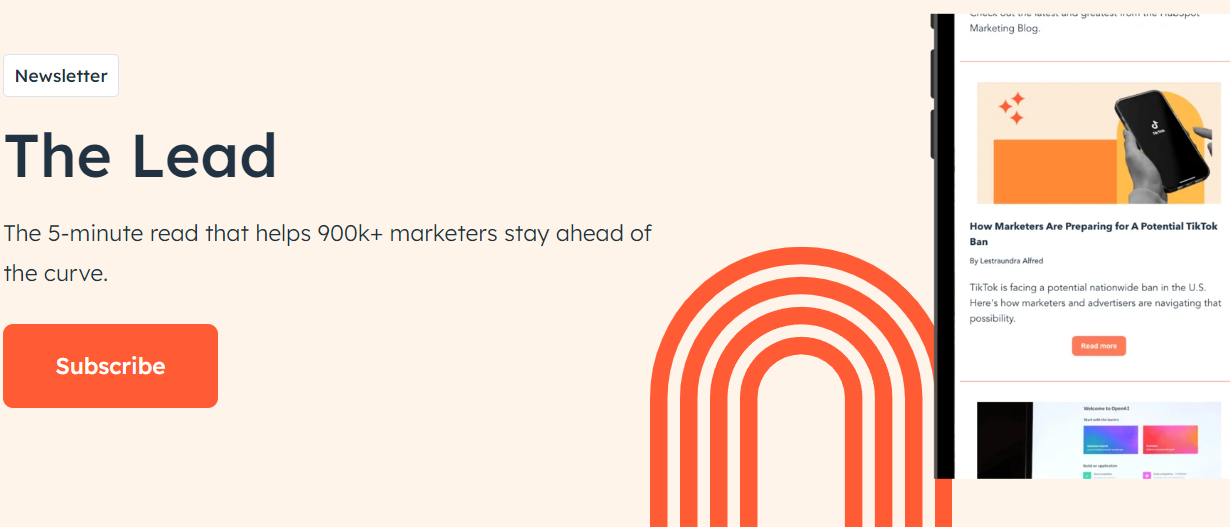
This helps HubSpot to go beyond simply segmenting customers in their list into different groups based on what they think they want to hear about. Instead, they can ensure they understand their customers’ interests as soon as they sign up for a newsletter.
Consider experimenting with multiple tailored newsletters specifically designed for each segment of your target audience in 2024.
10. Hyper-Personalization
I’ve mentioned personalization in virtually every article I’ve written about email marketing and best practice for years now. Ultimately, if you want to succeed in email marketing, you need to tailor your content to your customers.
However, there’s a lot more to effective personalization in today’s world than simply adding your recipient’s name to an email subject line. Consumers are now looking for hyper-personalized content that includes product suggestions relevant to them and information that addresses their needs.
The easiest way to ensure you can hyper-personalize your email marketing strategies in 2024, is to gather as much data about your customers as possible. This will help you to create more precise segments you can use when planning your campaigns.
For instance, Spotify looks at the listening history of their customers to determine what kind of information their customers might be interested in. For instance, they might email customers who listen to a lot of pop-punk whenever artists are coming to their area.
Grammarly takes a similar approach, sharing the insights they’ve gathered about their customers with them. For instance, every week, Grammarly sends out a weekly writing update that highlights what users have accomplished with the app:
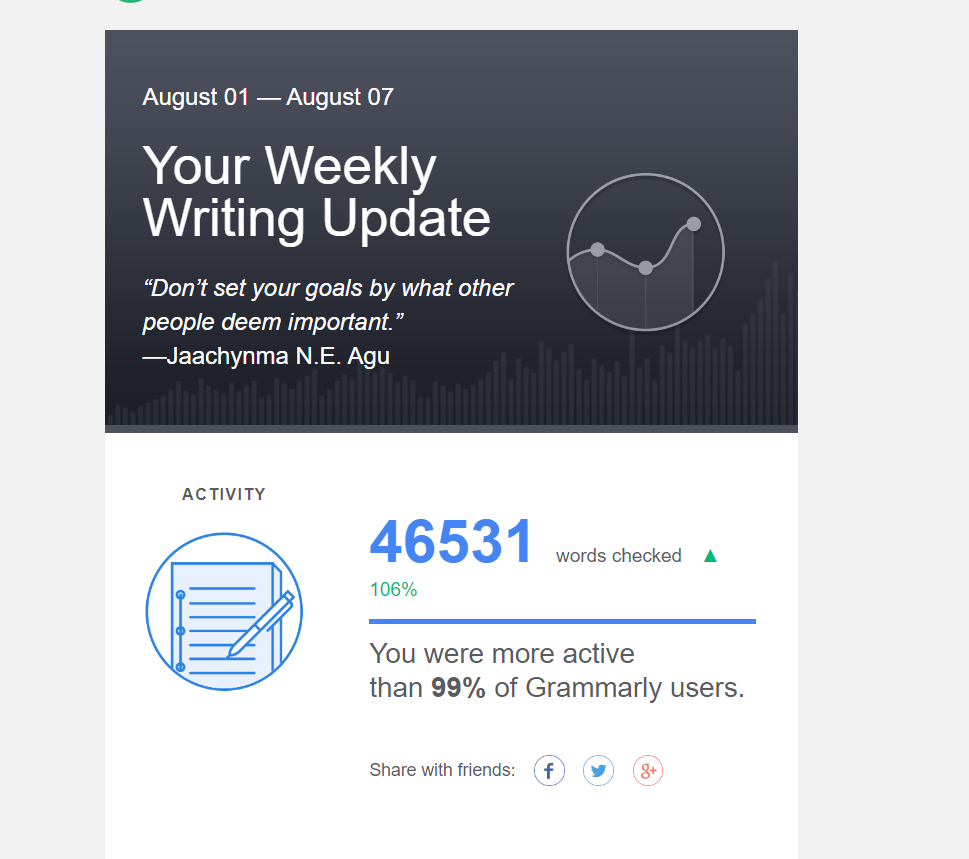
It’s this kind of highly personalized content that gives genuine value to your customers and shows them that you value them as an individual. Grammarly’s personalized content also has the added value of constantly validating the benefits of the app for its customers.
11. Advanced Automation Techniques
Similar to personalization, automation is more of a “standard” than one of the latest email marketing trends. These days, virtually every company investing in email marketing uses some form of automation. In fact, some studies show that 80% of companies feel automation improves their lead-generation efforts. However, how companies approach automation is beginning to change in 2024.
The rise of more advanced technologies and artificial intelligence means that companies can automate more and achieve better outcomes with their campaigns. For instance, you can automate:
- Predictive analytics: Machine learning algorithms built into email marketing tools can help you automatically predict what kind of content will drive the most engagement in the months ahead. This ensures you can invest in optimizing your marketing budget.
- Advanced segmentation: Sophisticated tools empower companies to segment subscribers based on more diverse criteria, such as how many times they’ve interacted with emails or what products they’ve purchased in the past.
- Automated list scrubbing: Removing unnecessary contacts from your list and ensuring you deal with unsubscribe requests quickly is crucial in today’s world. Automated solutions can tackle this process for you, saving you time and effort.
- Advanced automation workflows: Email automation tools now allow companies to build workflows that go beyond simple marketing or welcome sequences. You can combine your email and SMS sequences with integrations, design comprehensive lead nurturing and onboarding campaigns, and more.
Taking advantage of the latest evolutions in email marketing automation will help you drive better results while reducing costs and time spent on campaigns.
12. Increased Visual Content
As mentioned above, emails in 2024 are becoming more simplistic, but that doesn’t mean they should be text-only. Ultimately, visual content captures more attention than anything else in an email campaign. Whether it’s pictures of your products, videos, or even GIFS, emails with visual content naturally grab attention.
In an inbox often flooded with words, a video or vibrant visual stands out, offering a more dynamic experience. Videos can be an excellent way to make your emails feel more interactive, giving your customers more content to view from within their inbox.
However, adding video embeds to your emails can sometimes make content load a little slower. That’s why many organizations experiment with GIFs instead. Here’s an excellent example of how you can use animations in your emails to make your content more compelling:

The key to using visuals effectively is making sure that you don’t overload your content with too much extra data. Remember that customers still want their emails to load quickly. Experiment with different strategies, like image carousels, videos, or create your own GIF, and pay attention to which methods drive the most engagement from your target audience.
13. Exclusivity and FOMO
Finally, we come to two email marketing trends that have been around for quite some time in the digital landscape: exclusivity and FOMO.
Exclusivity in marketing emails gives you an excellent way to personalize your content and make it appear more engaging to your customers. It’s a way to make your customers feel special – like they’re part of an elite club. This ensures you can preserve stronger relationships with your audience.
For instance, Amazon sends emails to its Prime customers inviting them to “exclusive screenings” of new content on the platform.
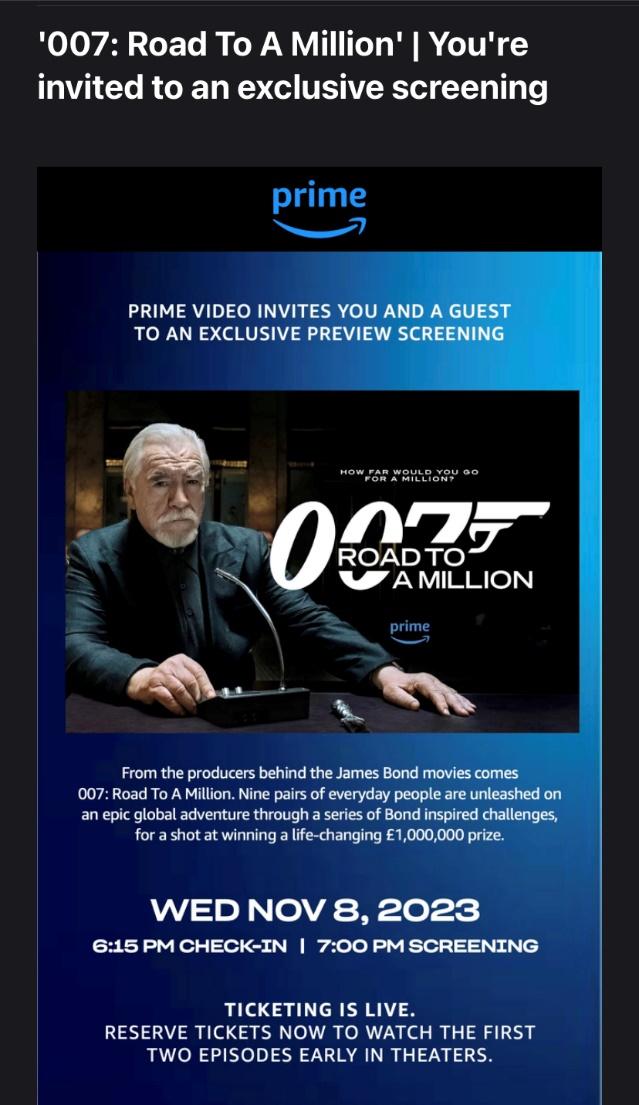
Exclusive content like this is one way to elevate feelings of “Fear of Missing Out” (FOMO). If customers think a solution is specifically tailored to them, they don’t want to miss out on an experience that other people can’t access.
However, there are plenty of other ways to generate FOMO too. Nobody wants to miss the opportunity to get exclusive products, save money, or have a unique experience.
With that in mind, consider crafting your email subject lines to focus on heightening that fear of missing out. For instance, let customers know when they’re “running out of time” to purchase a product or take advantage of an offer.
Leveraging the Top Email Marketing Trends in 2024
The email marketing trends and best practices you’ll need to monitor in 2024 focus heavily on giving consumers a more engaging experience in their inboxes. Everything from the rise of hyper-personalization to interactive content looks at ways you can strengthen your relationships with consumers and stand out among inbox clutter.
As we head into 2024, remember that generic email campaigns will no longer give you the results you want. You need to take your strategy to the next level, looking for new ways to resonate with your customers (while staying compliant with the latest regulations).
If you need help taking advantage of the top email marketing trends for 2024, reach out to Toptal for support from a world-leading email marketing expert.



